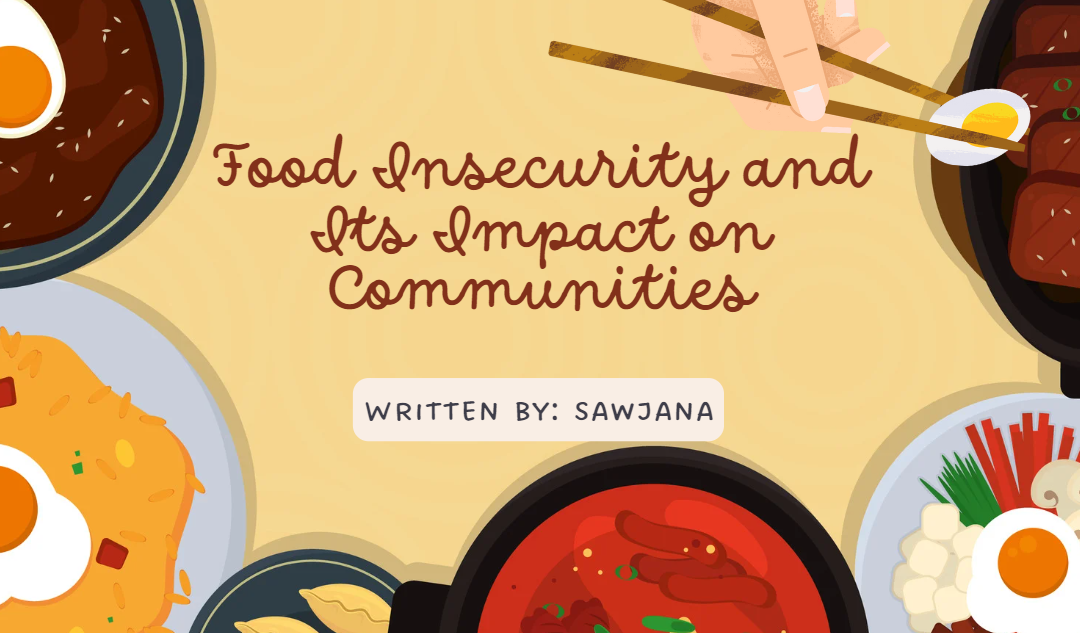Written by: Sawjana
Edited by: Julia Georgescu
Designed by: Keya Patel
Published by: Kiritika Rana
Defining Food Insecurity
Food insecurity refers to the lack of consistent access to sufficient, safe, and nutritious food that meets dietary needs and personal preferences for an active and healthy lifestyle. Sadly, it affects millions of individuals, families, and entire communities worldwide, both in developed and developing countries.
Causes of Food Insecurity
- Poverty: Poverty is a significant underlying cause of food insecurity. People need more financial resources to purchase an adequate quantity and quality food.
- Climate Change: Increasingly unpredictable weather patterns, natural disasters, and environmental degradation disrupt agricultural production, leading to crop failures and reduced food availability.
- Conflict and Displacement: Armed conflicts, political instability, and forced migration disrupt food systems, leaving communities without access to food and resources.
- Inequality and Inequitable Distribution: Unequal access to land, resources, and opportunities exacerbates food insecurity, widening the gap between the rich and the poor.
Impacts of Food Insecurity on Communities
- Malnutrition and Health Consequences: Insufficient access to nutritious food results in malnutrition, stunted growth, micronutrient deficiencies, and increased susceptibility to diseases. Children and vulnerable populations are particularly affected.
- Educational Challenges: Food insecurity affects educational outcomes, as hunger and malnutrition impede children’s cognitive development, concentration, and academic performance.
- Economic Consequences: Food insecurity perpetuates a cycle of poverty, hindering economic development and reducing community productivity.
- Social and Psychological Effects: Food insecurity can lead to social unrest, increased crime rates, and psychological distress, as individuals and families experience chronic stress and anxiety about their next meal.
Addressing Food Insecurity: Potential Solutions
- Sustainable Agriculture: Promoting sustainable farming practices, such as agroecology, urban farming, and small-scale farming initiatives, can enhance food production and ensure long-term food security.
- Social Safety Nets: Establishing and expanding social safety nets, such as cash transfer programs, school feeding programs, and food banks, can provide immediate relief to vulnerable populations.
- Empowering Local Communities: Encouraging community-led initiatives, fostering local food production, and promoting farmers’ cooperatives help build resilience and self-sufficiency within communities.
- Policy and Governance: Governments and international organizations play a crucial role in developing policies prioritizing food security, agricultural investment, and equitable distribution of resources.
- Education and Awareness: Promoting education on nutrition, sustainable food practices, and the importance of food security can empower individuals and communities to make informed decisions and advocate for change.
Resources

